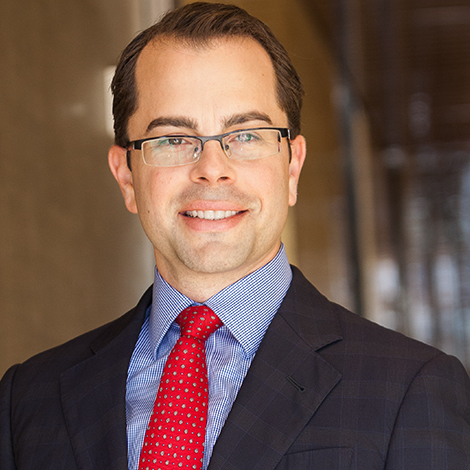
FDA should take steps to strengthen the regenerative medicine industry.
After Congress adopted the 21st Century Cures Act in 2016, giving the U.S. Food and Drug Administration (FDA) authority to streamline the approval process for qualifying regenerative medicine advanced therapies (RMATs), FDA announced a new regulatory framework for the regenerative medicine industry.
The policy’s framework included new and revised guidance documents, as well as a period of “enforcement discretion” that has allowed industry participants to engage with FDA to determine if they needed to apply for FDA marketing authorization. As the end of the enforcement discretion period approaches, regulators must provide additional assistance to the RMAT industry to ensure its further development.
FDA’s Center for Biologics Evaluation and Research regulates stem cell and other regenerative medicine products, but last year was also tasked with overseeing vaccine and drug development for COVID-19. Under the original FDA policy, the period of enforcement discretion would have ended in November 2020, but likely due to the COVID-19 crisis, FDA announced that it would extend the period through May 2021.
During the enforcement discretion period, FDA has designated 52 products so far for its RMAT approval process. FDA approved one such product earlier this year, a positive sign that it is fulfilling its mission under the 21st Century Cures Act to approve cellular products for the treatment of complex, previously incurable conditions.
Nevertheless, compliance has been slower than expected, and in spite of its enforcement discretion, FDA has continued to act against “bad actors,” typically in the form of warning letters to manufacturers and promoters of products derived from donated birth tissue, as well as public safety notifications and consumer alerts. It was no surprise when FDA—and the Federal Trade Commission (FTC) in some instances—began targeting unapproved stem cell products advertised as miracle cures for COVID-19.
Consequently, a binary picture of the RMAT industry has developed, with legacy biotech firms seeking FDA approvals at one end of the spectrum, sellers of snake oil on the other, and not much in between.
But this picture is incomplete. In reality, there is much more to this industry—such as licensed practitioners who have safely treated patients with their own tissue for years—and these practitioners have found themselves caught in the crossfire, with the media routinely lumping them into the pool of bad actors.
But are the practicing physicians treating their patients at many major institutions breaking the law? Of course not.
In addition to defining what products are regulated, FDA regulations also exempt certain procedures, such as when a doctor uses autologous platelet-rich plasma or bone marrow concentrate to treat certain conditions.
When doctors perform these exempted medical procedures, the question of whether they do so responsibly is answered by “the quintessentially state-law standards of reasonable medical care,” which also define whether physicians have sufficient data and provide remedies in the event of malpractice.
Nor are these physicians “experimenting” on their patients. Medical procedures are developed differently than mass-produced drugs, and mostly without the large pre-market trials called for by the media. As an example, doctors have treated patients using coronary artery bypass grafts for 100 years, and the procedures have continually evolved based on physician research in clinical settings.
Another exempted procedure, a parathyroidectomy with subsequent implantation of a portion of the tissue to preserve parathyroid function, was first studied in the early 1970s on 29 patients in a clinical setting and reported in 1975. Based on that initial study, the procedure soon became “a widely accepted technique” and is now expressly exempt from FDA regulation.
Of course, these exempted procedures also occupy a different portion of the market than regulated cellular products. For instance, concentrated autologous bone marrow may be an optimal treatment modality for patients suffering from minor orthopedic conditions and is already available at a relatively low cost.
For patients with more severe or acute injuries, however, culture-expanded cell-based treatments are likely a better option, but only one has been approved since 1997. That product, which involves culture-expanded cartilage-derived cells, costs over $40,000. Due to its high price, the product is not reimbursable for patients with mere osteoarthritis. This phenomenon is common among approved drugs.
In sum, for all of its dimensions, the regenerative medicine industry is defined poorly, and better regulatory support is needed for it to mature. FDA should take the following regulatory steps with permanence and structure in mind.
First, FDA should continue honoring its mandate under the 21st Century Cures Act by designating and approving RMAT therapies with the urgency they deserve.
Second, FDA should recognize its role as a federal regulator, well suited to continue enforcing against bad actors, and particularly those manufacturing and distributing unapproved birth tissue products in interstate commerce.
Third, FDA must recognize its limitations. As a federal regulator, it is poorly suited to oversee and regulate every doctor in the country, as those “police powers” have historically been left to the individual states.
Fourth, in May, FDA should end its era of enforcement discretion. The industry has had sufficient time to study FDA regulations and establish compliance.
Finally, to balance its resources and priorities, it is critical that FDA invites the individual states, medical boards, and accrediting organizations to pitch in on its regulation of the industry. Indeed, state laws typically define and govern the standards for medical procedures, but state laws defining and governing regenerative medicine procedures are at best underdeveloped. To bridge this gap, FDA should establish partnerships similar to those that help it shoulder its massive burden of regulating food, animal food, eggs, blood banks, medical devices, and mammography facilities.
The Mammography Quality Standards Act (MQSA) is a sound analog. In 1990, the U.S. General Accounting Office determined that most mammography facilities lacked adequate quality assurance programs and were providing images of unacceptable quality. In response, the MQSA authorized FDA to publish quality standards and create accrediting bodies to inspect facilities and enforce FDA’s quality standards. The MQSA remains the law today, and FDA’s MQSA Inspection Contract Program features 42 contracts with state, local, and territorial agencies, as well as the American College of Radiology.
FDA can create a similar partnership program for the exempt and lower risk portions of the regenerative medicine industry with the following key features:
- Accreditation bodies, including state agencies and nonprofits with explicit standards for the certification process and the accrediting bodies themselves;
- Quality standards, including quality assurance and control programs at each facility for patient safety purposes;
- Procedural and informed consent standards, including those I outlined in an earlier essay;
- Certificate and recertification requirements, mandatory for any facility providing regenerative medicine services in the United States;
- Application for a certificate, requiring facilities to provide detailed explanations of the procedures available, the equipment used, and background information for key personnel;
- Data standards, including the extent to which physicians may use shared or “pooled” data for the substantiation of health claims;
- Inspections, detailing the manner by which FDA’s partners must inspect certified facilities; and
- Sanctions, including monetary fines, suspensions, and revocations to punish violations.
By taking these actions, FDA will preserve its resources, provide individual states the direction they need to exercise their police powers, and allow the regenerative medicine industry to reach its true potential.




